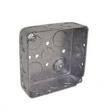Item three of your post:
...When the neutral is bonded to the frame and the generator is installed as a NON-SDS then there is a parallel path for the neutral current
Your right. let's discuss the danger of non-compliance. I am personally against any MGN installations. Let's look at the codes:
As previously noted, it has been okay to re-bond the NG at outbuildings. And then there is the history of range and dryer connections using the neutral for the equipment ground - unless you had a mobile home or subpanel - then you couldn't. Now it is not okay for any installation - what changed?
And, of course, there is the issue of under NESC it is proper, recommended, and safe to have multiple NG bonds. But under the NEC it is illegal and unsafe to have multiple NG bonds. Good to know the electron are smart enough to know which side of the Service they are on.
Then there is my personal favorite piece of moronic code: Outside transformers must have a second NG bond. Huh??
Probably only somewhat dumb for residential - however since I work industrial, and most all sites have a ground grid, this practice guarantees problems with solidly grounded Wye systems.. It mandates any neutral current is split between the ground grid and the neutral conductor. This one looks far deadlier than any 15kw residential gen connection with an NG bond in the gen and a 2 pole switch.
I do not advocate non-compliance.
I do not advocate any MGN systems.
I do advocate non-SDS generator installations.
I do advocate the NEC and UL getting together and actually talking.
And as others have said or alluded to:
I do understand the issue of a small cord and plug generators used for residential power outage temporay generation are also likely to be used for other cord and plug free standing applications. It is not a good idea to have a small residential grade generator that has the NG bond removed for the house temp power and have to have it installed for free standing use.
I do advocate mfgs marketing an inexpensive, 3 pole, residential grade, manual transfer switch.
And one of my own mis-spoken peices of wierdness:
How about Mfgs marketing small (15kw or less) residential grade 120/240 gens with an unbonded NG, a frame mounted 4W receptacle and CB, and a bonded NG panel mounted on the gen frame that will plug into the gen 4W recpt. The frame mounted panel is bonded, has the gfci 20A and 30A receptacles for free standing use.
Probably can't because it would cost an extra ten dollars
And yes, it is about money.
ice


